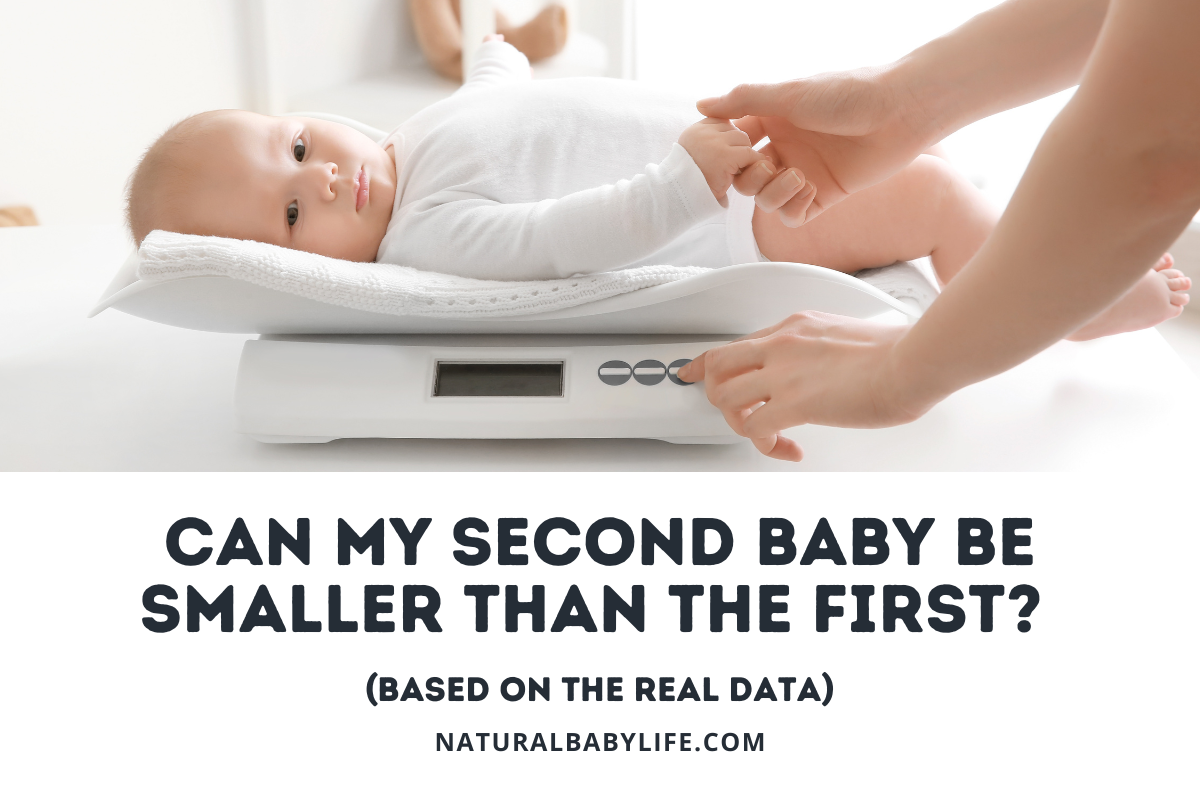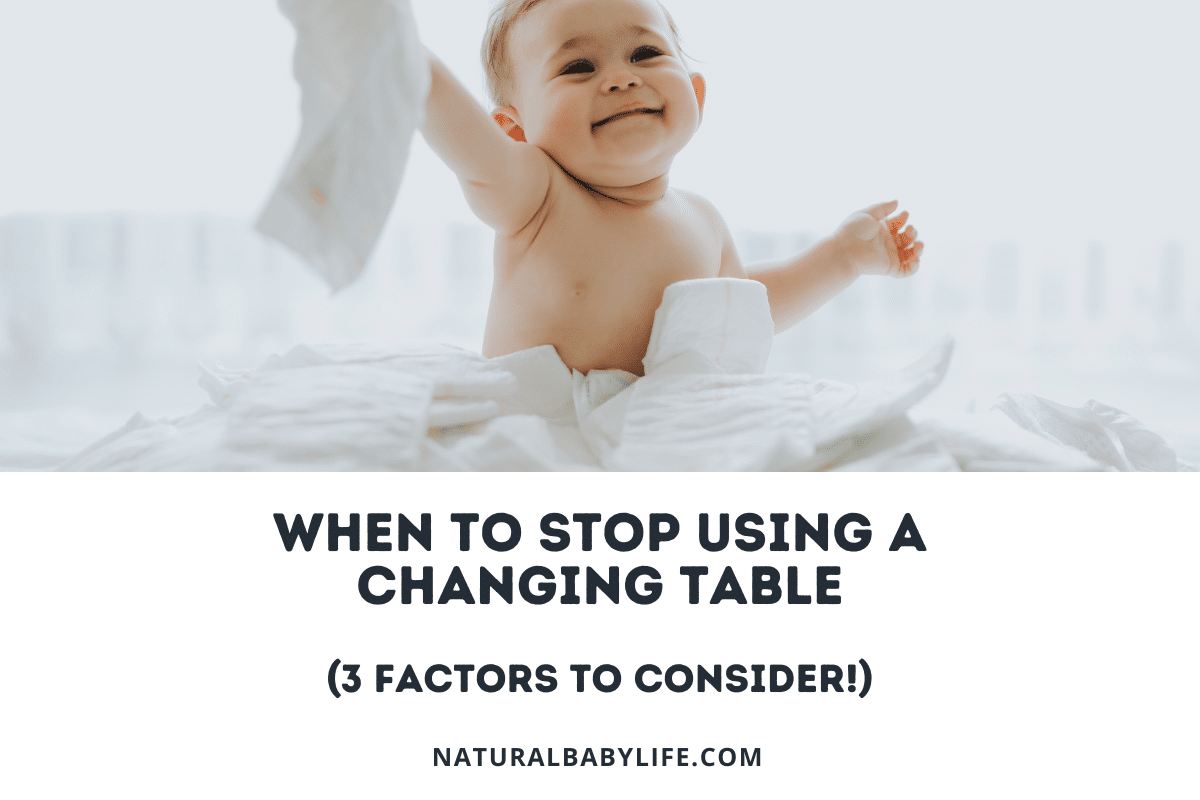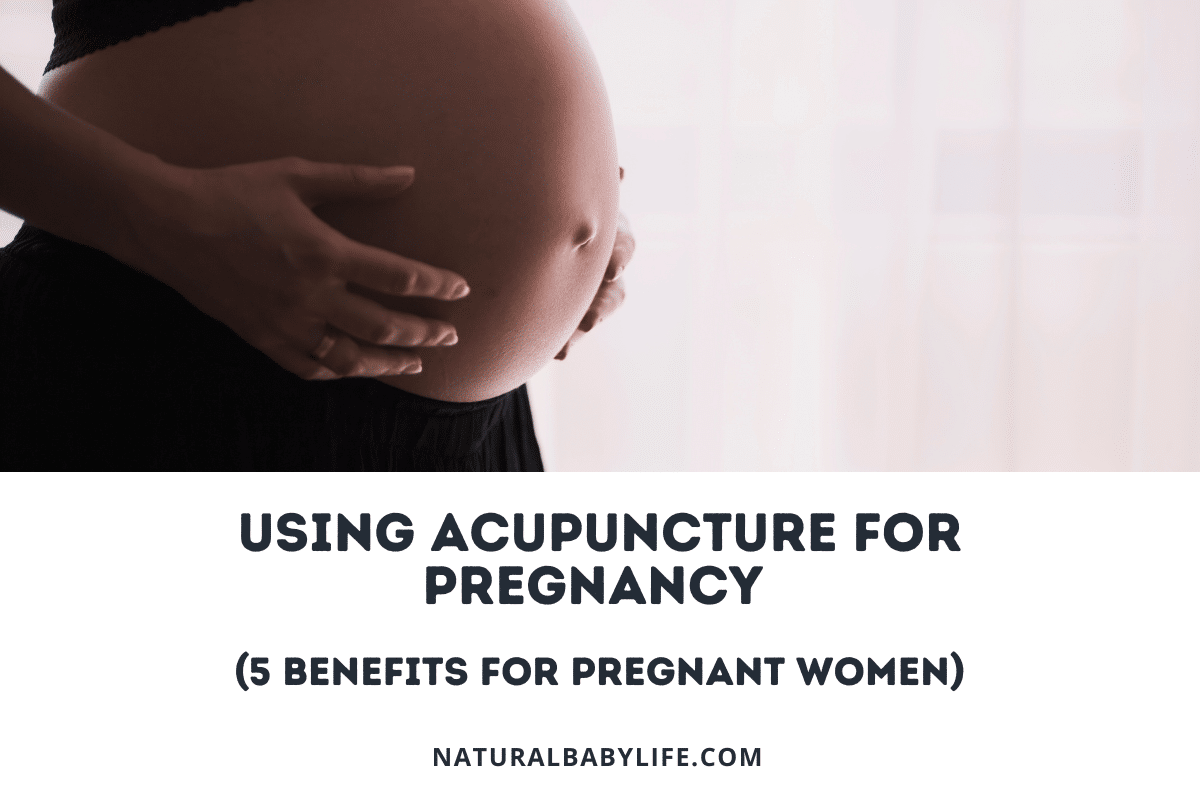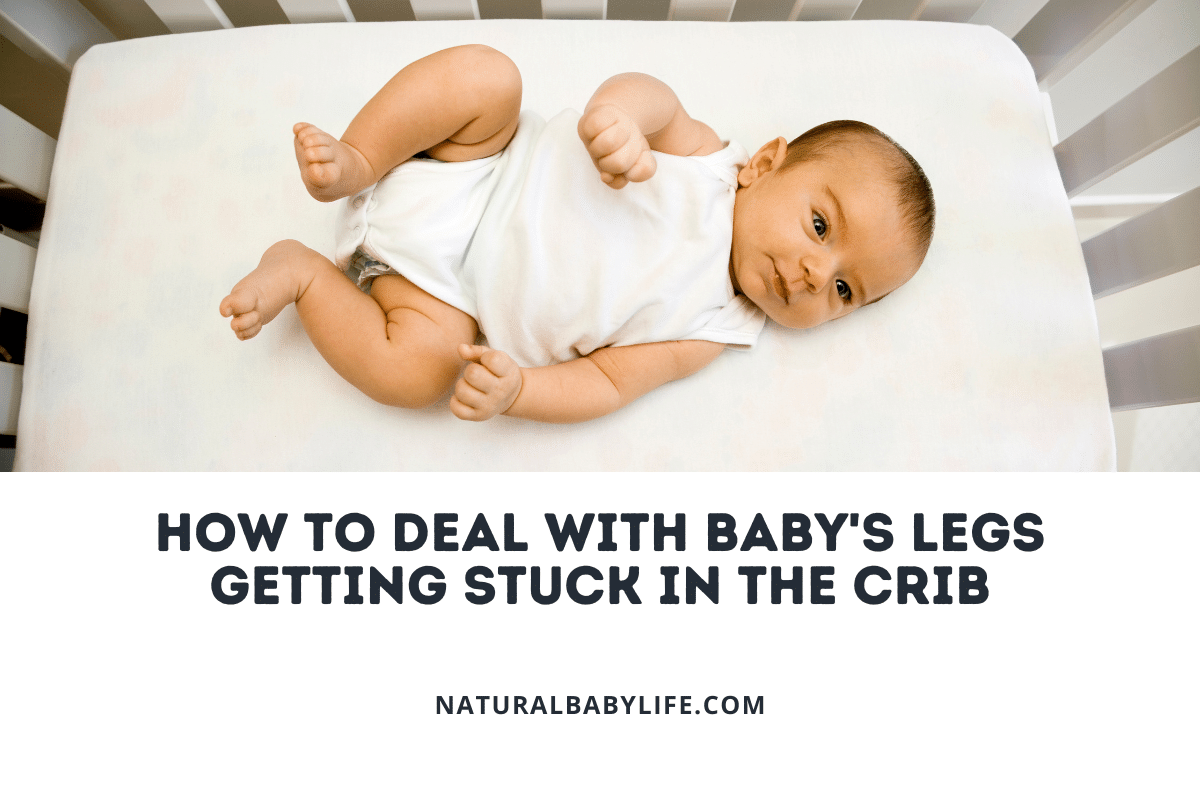After giving birth once, you might be hoping for a smaller second baby for an easier birth experience–and more time in newborn clothes! Anecdotal stories from friends and family can make it challenging to know whether this is a reasonable expectation.
All other things being equal, second babies tend to be larger than first babies, likely because of increased maternal age. On average, baby weight typically increases with birth order, but special circumstances like pregnancy complications can create exceptions to that trend.
Read on for more details about birth order and size and exceptions to consider to help you best set your expectations.
Table of Contents
Are second babies usually smaller or bigger than the first?
Studies conducted in the last few years all point to second babies being bigger than first ones. And, as birth order increases, so does the size of the baby.
Fortunately, the increase is a matter of ounces, so parents shouldn’t be universally concerned that they’re gestating an overly large baby unless there are other risk factors. A European study found that second babies weighed on average 4.5 ounces more than first babies. Thirdborns clocked in just over six ounces heavier than firstborns. The study excluded prematurely born babies and those with diseases or chronic conditions.
An Italian study found that second babies averaged 3 ounces heavier than first ones. Even though second pregnancies average a few days shorter than first ones,
Weights of second babies compared to the first
When we consider a newborn’s size, especially when comparing firstborn to latter-born babies, we typically focus on the babies’ weights. After all, weight is one of the very few things we know about our newborns until we learn more about their personalities!
More importantly, it’s an important predictor of a baby’s health, with low birth-weight babies experiencing more adverse outcomes like death and severe health concerns.
The average healthy weight range for a newborn infant is 5 pounds, 8 ounces to 8 pounds, 13 ounces. That’s a wide range, and babies below or above that average can still be healthy.
Many factors contribute to a baby’s weight, including the parents’ genetics, the mother’s nutrition, the baby’s health concerns, the baby’s sex, and the length of gestation.
Length of second babies compared to the first
Most of the research about size differences between first and second babies centers on the babies’ weights. Many more factors impact the length of babies, making it harder to predict or find a pattern between subsequent births.
While some of the mother’s characteristics–like her genetics and limb lengths–wouldn’t change between pregnancies, others do. Others, like the amount of sleep she gets and whether she has extra meals, can easily change between pregnancies. Surprisingly, these factors all appear to contribute to a newborn’s length.
Head circumference of second babies compared to the first
Head circumference makes up the third prong of the baby size metric triumvirate along with weight and height. Together, these three data sets provide medical providers with a perspective of the baby’s size in comparison to the larger population and whether there may be some underlying health concerns. However, no known link appears between birth order and head size.
Specifically, measuring head circumference gives providers a quick way to determine whether a baby suffers from microcephaly (a small head), which can signal a slew of possible health concerns like cerebral palsy, epilepsy, vision problems, cardiac problems, and much more.
Alternatively, a newborn with a larger-than-usual head size (macrocephaly) can be a sign of hydrocephalus, which is water in the brain.
Head size is also impacted by genetics, meaning these traits tend to run in families. Most babies can attribute their head sizes to inherited traits rather than a health concern. Babies with larger or smaller than usual heads can also be completely fine; that’s why head circumference is just one data point and not diagnostic.
Reasons why your second baby is larger than the first
Many factors contribute to a larger second baby. However, assuming that you’re taking basic care of yourself, most of them are beyond your control. You should not try to lose weight or prevent weight gain during pregnancy unless specifically directed by your obstetrician.
- Maternal age
- Maternal weight
- Maternal weight gain
- Sex of the baby
- Maternal health and nutrition during pregnancy
Maternal age
None of the studies considered found that maternal age alone could be the cause of higher birthweights for subsequent births. However, the link between maternal age and gestational diabetes is well-established, as is the connection between gestational diabetes and high birth weights.
When a mother experiences gestational diabetes, she has higher blood sugar that fuels a baby’s growth and can lead to a bigger baby.
Maternal weight
If you weigh significantly more during the pregnancy of your second child, your baby may also weigh more. Maternal obesity is related to higher birthweight babies, and not just because obesity can contribute to gestational diabetes.
Compared to non-obese women with gestational diabetes, obese women without gestational diabetes were more likely to have higher birthweight babies.
Given that most adults gain 1 to 2 pounds per year, it’s possible that simple weight gain between your pregnancies–or retained weight from your previous one–can impact your next baby’s weight.
If your first baby was large for gestational age, losing weight before your next pregnancy reduces your risk of future babies also being large for gestational age.
Maternal weight gain during pregnancy
Excessive maternal weight gain in early pregnancy–up to 18 weeks–appears to lead to larger babies. However, larger babies are associated with second births even if the mother gains less weight with the second pregnancy than the first, meaning that gestational weight gain isn’t a controlling factor, simply a possible contributor.
Sex of the baby
You can also anticipate a heavier second baby if you’re having a boy after first having a daughter. Male babies tend to weigh on average 4 ounces more than female babies.
Maternal health and nutrition during pregnancy
If your health is drastically different between your first and second pregnancies, it can impact the size of your babies.
Smoking during pregnancy, especially beyond the first trimester, strongly contributes to a baby that weighs less. Additionally, it appears to impact the baby’s head circumference and body weight ratios compared to length, leading to babies that weigh less for their frames in addition to weighing less overall.
Heavy alcohol use also contributes to lower birth weights. One study defined heavy drinking as at least 12 grams of alcohol on weekdays.
Finally, nutritional quality likely impacts newborn birth weight although the relationship isn’t entirely clear. Scientists know that micronutrient deficiencies can lead to low birth weights, whether through poor placental functioning or actual changes in the formation of the fetus.
However, because ‘healthy’ food varies between cultures, there’s no conclusive information about how a subtle change in diet could impact a woman’s subsequent pregnancies. If you experience an eating disorder or starvation during one pregnancy, it can impact your child’s birth weight.
Reasons why your second baby is smaller than the first
Although second and later babies tend to be smaller than your first, there are exceptions to that trend. Other than the sex of the baby, the factors contributing to a lower birth weight aren’t ideal, so you probably shouldn’t hope for a smaller newborn the second time around.
- Baby is born earlier
- Sex of the baby
- Mother uses alcohol or cigarettes
- Intrauterine growth restriction
Baby is born earlier
An early pre-term birth in a previous pregnancy is one of the most significant contributors to the likelihood of future premature births. Of course, your second pregnancy could be your first premature birth due to a number of complications with you or the baby, like intrauterine growth restriction or an incompetent cervix.
During the last weeks of pregnancy, your baby grows 8 to 12 ounces per week, so a significantly shorter pregnancy will yield a smaller baby.
Old wives’ tales tell us to expect a shorter pregnancy with second babies, but this advice is misleading, and there’s probably no need to pack your hospital bag weeks earlier. Statistically, labor naturally starts only a few days earlier for second pregnancies than first.
A large study found that 50 percent of first-time mothers delivered by 40 weeks and 5 days and 75 percent gave birth by 41 weeks and 2 days. Fifty percent of mothers who had given birth at least once delivered by 40 weeks and 3 days, and 75 percent gave birth by 41 weeks.
Sex of the baby
Given that female babies weigh on average 4 ounces less than newborn male babies, you can expect a smaller baby if you’re having a girl after a boy. If your second pregnancy is a baby of the same sex as your first, then this is one less factor to consider.
Mother uses alcohol or cigarettes
As noted above, substantial alcohol consumption and smoking cigarettes each lead to babies with lower birth weights. If you abstained from these items during your first pregnancy but use them in your second, you’re at risk for a lower-weight baby.
However, it may not be a matter of a few ounces and could instead put your baby at risk for being less than 5 pounds and 8 ounces, triggering a higher risk for a variety of health concerns.
Intrauterine growth restriction
Premature birth and intrauterine growth restriction (IUGR) are the two most common causes of low birthweight babies. If your second baby is impacted by IUGR, they’ll likely be smaller–perhaps much smaller–than your first.
Babies with fetal growth restriction might be smaller than usual just because they have small parents or because something happened in the uterus.
IUGR can be caused by placental abnormalities, the mother’s severe health condition (like kidney disease or cardiac problems), the mother’s high blood pressure, birth defects, chromosomal abnormalities, and infection.










